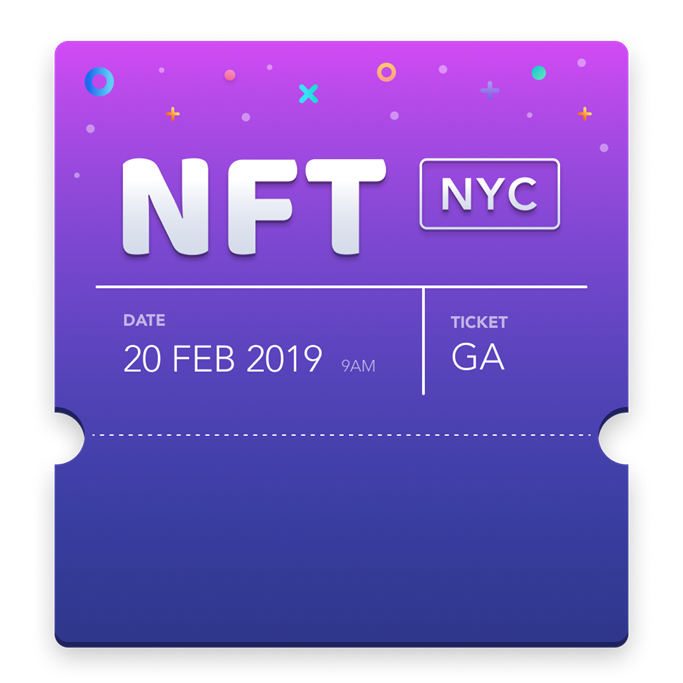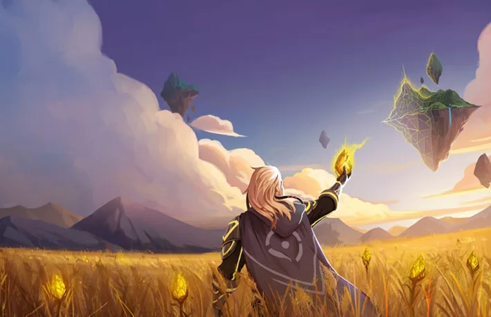It seems that the market has arrived at a consensus: proven ownership of digital assets can increase digital value. So how does it work, and where can this technology be useful?
What is an NFT?
NFT is short for "non-fungible-token", and it is essentially a special token with a unique ID that is impossible to replicate. They are used to create verified ownership of a digital asset in the worlds of crypto art, crypto collectibles, and other crypto assets.
The token is, like cryptocurrencies, part of the blockchain, a permanent ledger accessible to anyone with a computer and internet. The non-fungible aspect of the asset means that each NFT is totally unique. Two people could buy NFTs for the same price, but it does not mean that they are interchangeable. One NFT could be an illustration made by a famous artist, whereas another may be an exclusive song by a musician.
But what is the use of NFTs and where will they make a difference in the way we exchange assets?
NFTs and digital art
NFTs have seen a first application in digital art, as they were used to prove ownership over digital creations from renowned artists and illustrators. In exchange for bitcoins, Ethereum or other cryptocurrencies, you can now play the patron and acquire art online.
The question is always the same: what stops someone from simply downloading the image you acquired? Well, nothing. A bummer, right? Anyone can still download the image, have it on their computer, use it as a wallpaper or whatnot. However, the piece of media they have on their computer is worth nothing, as only you hold the key through the NFT. You have the original, with the value that comes with it. In the same logic, you can buy a poster of a Da Vinci painting. It looks the same, but it is only worth $30 because it is not the original. It is scarcity that makes the NFT valuable.
What’s more, the fact that the image is available can even increase the value of the original. Why? Because having more people seeing and knowing about the illustration contributes to its perceived cultural value.

NFTs and music
What would you think of a future where artists are paid more fairly? What if we could directly reward artists every time a ticket or merchandise item is sold?
In addition to the opportunity of acquiring exclusive pieces of music in a digital form, NFTs could be an interesting solution to the music industry as a whole. It would be possible to implement code in the NFT so that the owner gets paid every time one of its merchandise items is transferred, creating a kind of “merch loyalty”. This would replace the one-time revenue with a long-term, longer-lasting source of revenue for the artist.
NFTs as tickets
What if the secondary ticket market was no longer exploited by scalpers looking to make a quick profit? Have you ever bought a concert ticket 4 times the original price? This could be a dead practice soon.
NFTs could hold tickets with a limit on price. They could be coded into the asset that there is this number of seats, that this ticket is valid for this row and column, that the price is $50 and that it can be resold at maximum $100 – with of course, a part of the premium going directly to the artist and concert venue, as you can also code where the money is supposed to go. This solves a very simple issue: the secondary market for music tickets is a ten-billion-dollar market from which artists, concert venues and labels do not perceive a dime.
Of course, this solution would not only be applicable to concerts, but could be used for sports events, theatres, and other events with tickets.

NFTs and collectibles
Collectibles are, along with art, probably the area where NFTs have made their most solid advance so far. NBA Top Shots is a collectibles platform where basketball fans can purchase their favourite “moments” of the NBA league – often in the form of videos, such as a cool 3-pointer or an awesome dribble. According to data from NFT company Dapper Labs, the NBA’s Top Shots generated more than $700 million in sales from NFTs between 2019 and August 2021.
There are many other platforms to trade NFTs, whether for collectibles or digital art, which sometimes are the same thing. The largest and most popular is OpenSea, with a total trading volume above $10 billion for the year to November. This new record came only 3 months after hitting the symbolic $1 billion threshold. While the average user has sold a little over $1,000 in digital assets, many items were sold for unprecedented amounts.
NFTs and gaming
Mix NFTs and Pokemons, and you get Axie Infinity. This is a digital pet community where users can raise, breed and trade digital creatures called Axies. The game is not only popular because it is fun, but also because you can earn cryptocurrencies by levelling up your characters. This is one of the first “play-to-earn” models, with users earning tokens for a value of $4-$7 per hours – not bad during a pandemic. The game has become a complex world with an actual job market and a complex economy.
Skyweaver is a digital trading card game. To shift the perception of ownership in game, they turned to NFTs to instore a proven and legit ownership proof over the played cards. These cards are stored on a blockchain wallet and can be transferred to any Ethereum wallets.
These play-to-earn games have become a real phenomenon, and we expect more and more games to use this strategy to attract gamers.

NFTs and decentralized finance
One of the latest developments for NFTs is their marriage to decentralized finance (DeFi), with new projects such as NFTi. NFTi allows borrowers to post digital items as collateral. This would be one of the first platforms that allows the use of non-fungibles as collateral, whereas other DeFi platforms such as Compound or Aave only used fungibles like Ethereum or other stablecoins.
“As NFTs re-imagine how we produce and define ownership of digital content online, we’ll also, in turn, begin to re-imagine a whole new category of financial services based on these new building blocks,” Lasse Clausen, a partner at the venture firm 1kx, said in a press release.
There are countless other projects as well, such as NIFTEX which allows the fractional ownership of NFTs; Mintbase, a platform that facilitates the minting of NFTs; or NFTX, which allows community-owned index funds, meaning that one token could represent ownership of many NFTs.
A speculative danger?
One could be doubtful and think that this is speculative abuse, especially in the collectibles and digital art space. The fact that you can buy a $500 piece of art and resell it 30 times the price – or more – only a few days later seems ridiculous. Even more, why would anyone pay $100,000 for a digital representation of a car?
In the end, your art assets might lose value. But then again, art was never a sure way to make money. While we hear about amazing profits, this is not the norm, as most people do not make much money. In fact, many art and cryptocurrency experts believe that 90% of art NFTs will lose most of their value within 3-5 years.
Conclusion: growing adoption
Much of the success of NFTs is attributable not only to their functionality, but also to the steady progress of the cryptocurrency market. Any further growth in cryptos will likely take NFTs along.
Companies in various industries are getting more interested in the technology (Gucci, Disney, Nike, Marriot, Alibaba, to name a few), as NFTs are also a channel for companies to enter the metaverse – nothing is easier than making digital version of your products!
Finally, NBA Top Shots and their recent $700 million in sales has proven that NFTs can represent a new revenue stream opportunity.
Overall, what was first perceived as nonsense by the public – or largely misunderstood – is growing into a big opportunity. We believe that NFTs, like crypto, are here to stay, and will likely disrupt our activities on numerous levels.





